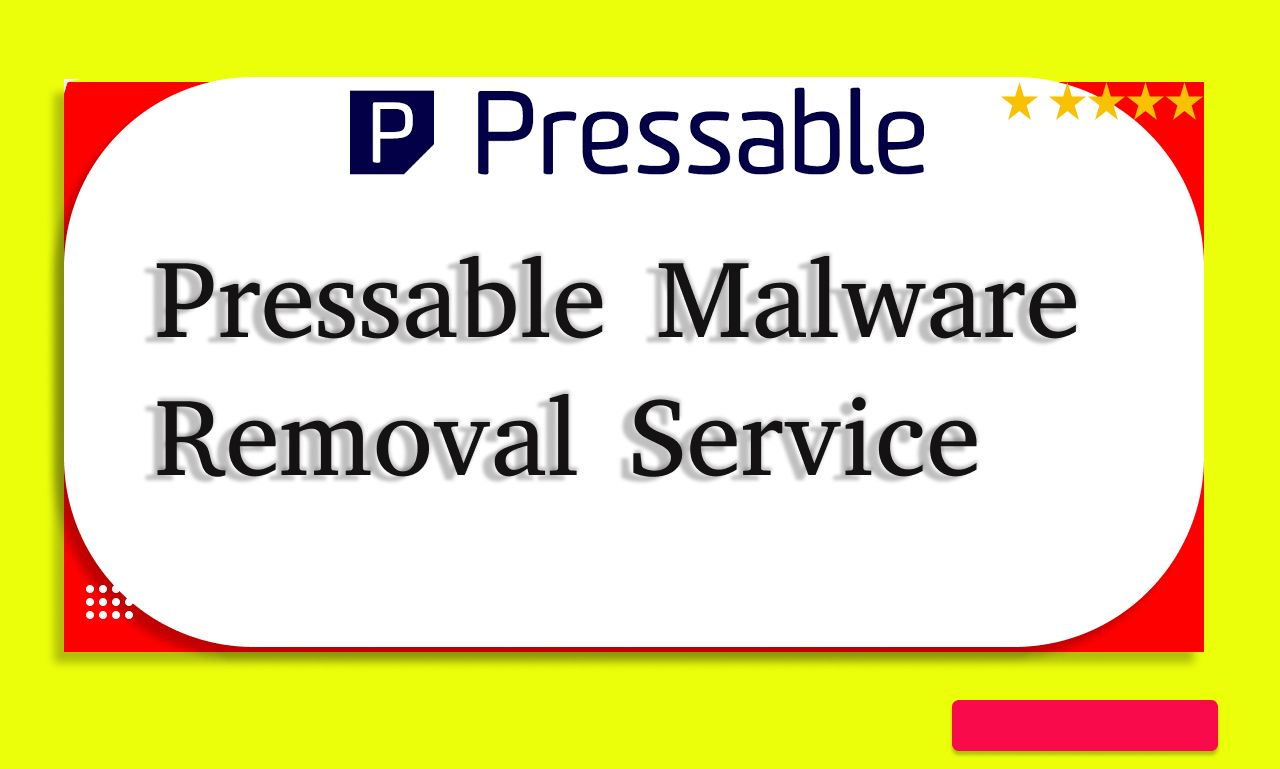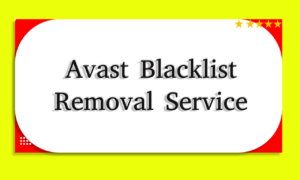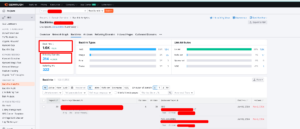Description
Opt for WpPiP’s dependable Pressable Malware Removal Service. Our skilled team efficiently eradicates malware, ensuring the security of your Pressable-hosted website. Rely on WpPiP for customized solutions to fortify your online presence.
Pressable Malware Removal and Website Security Monitoring
Is your Pressable website experiencing unusual behavior? Slow loading times, unexpected pop-ups, or even search engine blacklisting could all be signs of a malware infection. Malicious code can wreak havoc on your website’s security and reputation, causing data breaches and harming your online presence.
Why Choose WpPiP for Pressable Malware Removal?
- Pressable Expertise: Our team has extensive knowledge of Pressable’s security features and configurations, allowing for a targeted and efficient cleanup process.
- Deep Malware Scans: We utilize advanced security scanners to thoroughly analyze your Portable website, leaving no stone unturned in the fight against malware.
- Safe and Secure Removal: Our experienced technicians will meticulously remove all malicious code without harming your website’s core files or functionality.
- Detailed Reports: You’ll receive a comprehensive report outlining the identified threats and the steps taken for removal, keeping you informed throughout the process.
- Ongoing Security Monitoring: Our services extend beyond immediate cleanup. We provide ongoing security monitoring to identify and neutralize future malware threats before they can cause damage.
Benefits of WpPiP’s Pressable Malware Removal and Security Monitoring:
- Peace of Mind: Knowing your Pressable website is protected lets you focus on growing your business, not fighting malware.
- Reduced Downtime: By proactively addressing malware threats, we minimize website outages and disruptions for your visitors.
- Enhanced Security Posture: Our ongoing monitoring helps identify and address security weaknesses in your Pressable setup, strengthening your website’s overall defenses.
- Improved Website Performance: A malware-free website runs smoother and loads faster, leading to a better user experience.
Top 50 types of Pressable website malware that we can remove:
1. Backdoors: Hidden code that grants unauthorized access to a website’s files and systems. 2. Code Injection: Malicious code inserted into legitimate website code, often to steal data or redirect traffic. 3. Cross-Site Scripting (XSS): Exploiting vulnerabilities to inject malicious scripts into webpages, affecting user interaction. 4. Cross-Site Request Forgery (CSRF): Tricking a user’s browser into performing unauthorized actions on a trusted website. 5. Defacement: Malicious modification of a website’s content, often with a message or propaganda. 6. Drive-by Downloads: Malicious code automatically downloads malware onto a visitor’s device when they access the website. 7. Exploit Kits: Pre-built tools that automate attacks by finding and exploiting website vulnerabilities. 8. Fileless Malware: Malware that doesn’t rely on traditional files, making it harder to detect. 9. Formjacking: Stealing user information submitted through website forms, like login credentials or credit card details. 10. Hidden Malware: Malicious code disguised as legitimate content, making it difficult to identify. 11. Injections (SQL, LDAP): Injecting malicious code into databases to manipulate or steal data. 12. Iframe Hijacking: Replacing website content with an iframe displaying malicious content. 13. Malvertising: Malicious advertisements that redirect users to phishing sites or download malware. 14. Mobile Malware: Malware specifically targeting mobile devices accessing websites. 15. Phishing: Creating fake login pages or websites to steal user credentials. 16. Ransomware: Blocking access to a website or its data and demanding payment for its release. 17. Remote Access Trojans (RATs): Tools allowing attackers to remotely control infected devices. 18. SEO Spam: Injecting spam keywords to manipulate search engine rankings for the website. 19. Session Hijacking: Stealing a user’s session ID to impersonate them and access their account. 20. Skimming: Stealing credit card information during online transactions. 21. Social Engineering Attacks: Manipulating users into taking actions that compromise website security. 22. Spam Bots: Automated programs that spam message boards or comment sections on a website. 23. Spyware: Software that gathers information about users’ activity without their consent. 24. Steganography: Hiding malware within seemingly harmless files like images or videos. 25. Trojan Horses: Programs that appear legitimate but contain hidden malicious functionalities. 26. URL Redirects: Malicious redirects take users to phishing sites or malware download pages. 27. Watering Hole Attacks: Targeting websites frequented by a specific group of users to infect their devices. 28. Web Bugs: Tiny images embedded in websites to track user activity without their knowledge. 29. Website Backups: Malware that backs up a website’s data for future attacks or data theft. 30. Worms: Self-replicating malware that spreads across websites within a network.
Additional Pressable Malware Types (Focusing on Functionality):
31. Adware: Displays unwanted advertisements on a website. 32. Cryptojacking: Uses website visitors’ processing power to mine cryptocurrency for the attacker. 33. Denial-of-Service (DoS): Overwhelming a website with traffic to make it inaccessible to legitimate users. 34. Link Spam: Inserting irrelevant or misleading links within a website. 35. Malicious Pop-ups: Displaying unwanted pop-up windows with ads, surveys, or fake alerts. 36. Malvertising Redirects: Malicious redirects from legitimate advertising networks. 37. Malicious SEO Redirects: Redirects to spammy or irrelevant content to manipulate search rankings. 38. Password Stealers: Programs that capture user login credentials from forms. 39. Phishing Kits: Pre-built tools for creating and launching phishing attacks. 40. SEO Black Hat Techniques: Unethical methods to improve search engine rankings, often harming user experience. 41. Spam Injections: Injecting spam content into forum posts, comments, or contact forms. 42. Spam SEO Backlinks: Creating low-quality backlinks to a website to manipulate search rankings. 43. Spamware: Unsolicited emails promoting products or services, often containing malware links. 44. Spambots: Automated programs that spread spam messages or comments across the web. 45. Spoofing: Impersonating a legitimate website or user to gain trust and steal information. 46. SQL Injection Attacks: Specifically targeting vulnerabilities in SQL databases to steal or manipulate data. 47. Stealer Malware: Malware designed to steal various types of data from websites or user devices, including passwords, financial information, or intellectual property. 48. Traffic Bots: Malicious bots that generate fake website traffic to inflate metrics or manipulate analytics. 49. Watering Hole Attacks (Targeted): Targeting websites frequented by a specific user group with malware relevant to their interests or industry. 50. Zero-Day Exploits: Exploiting vulnerabilities in software before a patch is available, makes them highly dangerous.
Pressable Malware Removal Service Includes:
✅ Hacked website clean Backup files and database
✅Deep malware Scan of all Files and WordPress malware removal
✅Manually remove malware from Full Server or Cpanel
✅Hosting suspension removal
✅Fix redirecting issues
✅Blacklist removal (Google, Norton, McAfee, etc)
✅Google Japanese spam link removal
✅Plugins update
✅Fix website errors
✅SSL Installation
✅Any issue or bug Fixed
✅30 days support
Don’t Let Malware Hold Your Pressable Site Back!
Contact us today to get more Pressable Malware Removal information and the best services and security monitoring service to take care of your website’s security. We’ll restore your website’s health and ensure it remains secure for the long haul.












Reviews
There are no reviews yet.